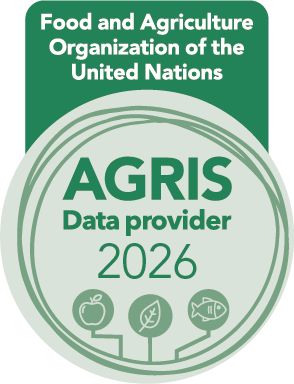Ethnomedicinal potential of Heliotropium angiospermum Murray as a source of alternative medicines
DOI:
https://doi.org/10.5281/zenodo.10908827Keywords:
family farming, ethnobotany, diseasesAbstract
Context: The ancestral knowledge associated with plants with medicinal uses is at risk of being lost, hence the importance of carrying out ethnobotanical explorations to rescue said knowledge, preserve it and generalize it.
Objective: To determine the ethnomedicinal potential of Heliotropium angiospermum as a source of alternative medicines.
Methods: An ethnobotanical study was carried out through a semi-structured interview, which inquired about the utilities attributed to H. angiospermum in different family patios of the La Prueba settlement. A sample of 35 key informants selected by the snowball method was used.The answers were grouped according to consensus among the informants and the spectrum of use, use value, use value index, significant tramil use and index of cultural importance were determined, in addition to other ethnobotanical indicators.
Results: The studied species was only recognized by 94.29 % of the informants, to which they attributed utility, exclusively, from the medicinal point of view, being skin problems, inflammations and cancer the main diseases treated.The leaf was the main organ used to obtain alternative medicines and the main forms of preparation were infusion and common water.
Conclusions: H. angiospermum is widely used as a medicinal plant to which properties are conferred for the treatment of diseases related to the presence of free radicals and has a strong implication in the social and cultural environment of people.
Downloads
References
Birecka, H., Dinolfo, T. E., Martin, W.B. & Frohlich, M. W. (1984). Polyamines and Leaf Senescence in Pyrrolizidine Alkaloid bearing Heliotropium Plants. Phytochemistry, 23(5), 991-997. https://doi.org/10.1016/S0031-9422(00)82598-4
Candó, L., del Toro, J. O., Ramos, Y. M., Vargas, B., & Rizo, M. (2020). Usos potenciales de baja referencia asociados a las arvenses presentes en fincas suburbanas de Santiago de Cuba. Ciencia en su PC, 3, 69-91.https://www.redalyc.org/journal/1813/181365138005/html/
Carvajal, C. (2019). Especies reactivas del oxígeno: formación, función y estrés oxidativo. Revista Medicina Legal De Costa Rica, 36(1), 91-100. https://www.scielo.sa.cr/scielo.php?script=sci_arttext&pid=S1409-00152019000100091
Castañeda, R., & Albán, J. (2016). Importancia cultural de la flora silvestre del Distrito de Pamparomás, Ancash, Perú. Ecología Aplicada, 15(2), 151-169.http://dx.doi.org/ 10.21704/rea.v15i2.755
Castañeda, R., Gutierrez, H., Coralillo, E., & Sotelo, A. (2017). Leguminosas (Fabaceae) silvestres de uso medicinal del distrito de Lircay, provincia de Angaraes (Huancavelica, Perú). Boletín Latinoamericano y del Caribe de Plantas Medicinales y Aromáticas, 16(2), 136- 149.http://www.redalyc.org/articulo.oa?id= 85649864006
Castell Puchades, M. Á., Revilla Góngora, Y., Polanco Durán, G., & Baró Bou, Y. (2020). Fenología de componentes de la flora en el uso de la medicina natural y tradicional en la comunidad de Verraco, Santiago de Cuba, Cuba. Revista Cubana de Ciencias Forestales, 8(3), 392-409. http://cfores.upr.edu.cu/ index.php/cfores/article/view/604
Crespo, G., Di Toro, L, Valdebuena, D., Pérez, J., Díaz, M., Souki, A., Cano, C.& Salazar, J. (2020). Estrés oxidativo y su papel en el Cáncer: Una perspectiva Molecular. Ciencia e Innovación en Salud. e97, 383-397. https://doi:10.17081/innosa.97
De La Cruz-Jiménez-Jiménez, L., Hernández-Torres, M. A., Monroy-García, I. N., Rivas-Morales, C., Verde-Star, M. J., González-Villasana, V., & Viveros-Valdez, E. (2022). Biological activities of seven medicinal plants used in Chiapas, Mexico. Plants, 11, 1790. https://doi.org/ 10.3390/plants11141790
Erosa, G., Peña, L. M., & Sterner, O. (2009). Secondary Metabolites from Heliotropium angiospermum. Journal of Mexican Chemistry Society, 53(2), 44-47. http://www.redalyc.org/articulo.oa?id=47512080003
Fayed, M. A. A. (2021). Heliotropium; a genus rich in pyrrolizidine alkaloids: A systematic review following its phytochemistry and pharmacology. Phytomedicine Plus, 1(2), 100036. https://doi.org/10.1016/j.phyplu.2021.100036
Fernández, D. (2019). Potencialidades de la flora existente en patios familiares para generar bienes y servicios en Santiago de Cuba. (Tesis de pregrado). Universidad de Oriente.
Fernández, R., Ramos, D., & Carranza, E. (2001). Notas sobre plantas medicinales del estado de Querétaro, México. Polibotánica, 12, 1-39. https://polibotanica.mx/index.php/polibotanica/article/view/662
Fuentes, V., Granada, M. M., Lemes, C. M., & Rodríguez, C. A. (2000). Estudios fenológicos en plantas medicinales XI. Revista Cubana de Plantas Medicinales, 5(3), 106-113. http://scielo.sld.cu/pdf/pla/v5n3/pla08300.pdf
González, L. R., Palmarola, A., González, L., Bécquer, E. R., Testé, E., Castiñeira, M.A., Barrios, D., Gómez, J. L., García, J. A., Granado, L., Rodríguez, D., Berazaín, R., & Regalado, L. (Comp.). (2016). Lista Roja de la flora de Cuba. Bissea, 10(número especial), 33-283. https://www.planta.ngo/wp-content/uploads/2016/10/red_list_of_the_flora_of_Cuba.pdf
Guapacha, M. N., & Rodríguez, P. A. (2017). Usos tradicionales de la flora de medicinal y mágico religiosa en el departamento del Quindío. (Tesis de pregrado). Universidad del Quindío. https://bdigital.uniquindio.edu.co/handle/001/2862
Halliwell, B., Gutteridge, J. M. C., & Cross, C. E. (1992). Free radicals, antioxidants, and human disease: where are we now? Journal of Laboratory and Clinical Medicine, 119(6), 598-620.
Jaramillo, M. A., Castro, M., Ruiz, T., Lastres, M., Torrecilla, P., & Lapp, M. (2014). Estudio etnobotánico de plantas medicinales en la comudidad campesina de Pelelojo, municipio Urdaneta, estado de Aragua, Venezuela. Ernstia, 24(1), 85-110. https://docs.bvsalud.org/biblioref/2018/01/877905/estudio-etnobotanico-de-plantas-medicinales-en-la-comunidad-cam_rBs6Rvm.pdf
Kehrer, J. P. (1993). Free radicals as mediators of tissue injury and disease. Critical reviews in Toxicology, 23(1), 21-48. https://doi.org/ 10.3109/10408449309104073
Lastres, M., Ruiz-Zapata, T., Castro, M., Torrecilla, P., Lapp, M., Hernández, L., & Muñoz, D. (2015). Conocimiento y uso de las plantas medicinales de la comunidad Valle De La Cruz, Estado Aragua. Pittieria, 39, 59-89. https://www. researchgate.net/publication/279531626
Ochoa, A. M. (2017). Conocimiento y uso tradicional del recurso fitomedicinal de la comunidad del Río Yurumanguí, Distrito de Buenaventura. (Tesis de maestría en Desarrollo Sostenible y Medio Ambiente). Universidad de Manizales. https://ridum.umanizales.edu.co/xmlui/bitstream/handle/20.500.12746/3054/Tesis_Etnobot%c3%a1nica_Ang%c3%a9lica_Ochoa_2017.pdf?sequence=1&isAllowed=y
Orozco-Martínez, J., Lira-Saade, R., Jiménez- Estrada, M., Ávila-Acevedo, J. G., Serrano- Parrales, R., & Hernández-Delgado, T. (2020). Medicinal plants of Oaxaca, Mexico: Ethnobotany and antibacterialactivity. Boletín Latinoamericano y del Caribe de Plantas Medicinales y Aromáticas, 19(2), 221-235. https://doi.org/10.37360/blacpma.20.19.2.14
Pinheiro da Costa, F. C., & Miranda de Melo, J. I. (2019). Boraginales (Boraginaceae s.l.) and Lamiales (Lamiaceae and Verbenaceae) in a Conservation Area in the Semiarid Region of Northeastern Brazil. Rodriguésia, 70, e01472017. http://dx.doi.org/10.1590/2175-7860201970009
Radwan, D., & El-shabasy, A. (2020). Comparative analysis of five Heliotropium species in phenotypic correlations, biochemical constituents and antioxidant properties. Catrina, 21(1), 1-8. https://doi.org/10.21608/ cat.2020.19477.1034
Rivera Hernández, A., Cortina Pelier, L. M. & Gallardo López, M. B. (2022). Estudio etnobotánico de especies medicinales en comunidades de montaña del municipio El Salvador, Guantánamo.Cub@: Medio Ambiente y Desarrollo, 22(43), 1-8. https://cmad.ama.cu/index.php/cmad/article/view/327/721
Rodríguez, L. M. (2015). Etnobotánica maya: Algunas plantas de uso medicinal en estomatología. Revista ADM, 72(1), 21-25. https://www.medigraphic.com/pdfs/adm/od-2015/od151e.pdf
Roig, J. T. (2014). Diccionario botánico de nombres vulgares cubanos. (4ta ed.). Editorial Científico-Técnica.
Sánchez, A., García, K., May, F. & Peña, L. M. (2001a). Evaluation of the biological activity of crude extracts from plants used in Yucatecan Traditional Medicine. Part I. Antioxidant, antimicrobial and b-glucosidase inhibition activities. Phytomedicine, 8(2), 144-151. https://doi.org/10.1078/0944-7113-00020
Sánchez, A., García, K., May, F. & Peña, L. M. (2001b). Evaluation of the biological activity of crude extracts from plants used in Yucatecan Traditional Medicine. Part II. ADN-interacting activity. Phytomedicine, 8(3), 236-239. https://doi.org/ 10.1078/0944-7113-00024
Soria, N., Ramos, P., Viveros, G., Estigarribia, G., Ríos, P., & Ortíz, A. (2020). Etnobotánica y uso de plantas medicinales en unidades familiares de salud de Caaguazú, Paraguay. Caldasia, 42(2), 263-277. https://dx.doi.org/10.15446/caldasia.v42n2.76907
Tituaña, K. V., & Guevara, J. D. (2017). Estudio etnobotánico en comunidades del Valle del Chota. (Tesis de pregrado). Universidad Técnica del Norte.
Urdaneta, I., Padró, L., Tur, E., & Izaguirre, Y. L. (2020). Caracterización etnobotánica de la Lawsoniainermis L. en el Distrito José Martí Norte, Santiago de Cuba. Revista Científica del Amazonas, 3(6), 6-17. https://doi.org/10.34069/RA/2020.6.01
Valois, H., Martínez, C., Rentería, Y. Y., &Panesso, S. M. (2013). Diversidad, patrones de uso y conservación de palmas (Arecaceae) en bosques pluviales del Chocó, Colombia. Biología Tropical, 61(4), 1869-1889. https://www.scielo.sa.cr/pdf/rbt/v61n4/a24v61n4.pdf
Vargas, B., del Toro, J. O., Rodríguez, E. J., Rizo, M., & Pupo, Y. G. (2019). Potencialidades medicinales de la flora arvense en fincas suburbanas de Santiago de Cuba. Centro Agrícola, 46(1), 54-57. http://scielo.sld.cu/pdf/cag/v46n1/0253-5785-cag-46-01-54.pdf
Vargas, B., Rodríguez, E. J., & Fernández, D. (2023). Nociones generales sobre etnobotánica y un estudio de caso sobre los criterios sociales que sustentan la presencia especies vegetales en la agricultura familiar. En, B. Vargas (Comp.), Agricultura Familiar: su aporte a la conservación de la biodiversidad y a la alimentación. (pp. 37-50). Editorial EXCED. https://doi.org/10.58594/QAHA5847
Vargas-Batis, B., del Toro-Rivera, J. O., Pupo-Blanco, Y. G., Rizo-Mustelier, M., Candó-González, L., & Ferrer-Romero, J. C. (2020). Percepción etnobotánica de los campesinos sobre la flora arvense en fincas de la agricultura suburbana en Santiago de Cuba, Cuba. Boletín Latinoamericano y del Caribe de Plantas Medicinales y Aromáticas, 19(1), 126-141. https://doi.org/ 10.37360/blacpma.20.19.1.6
Vera-Ku, M., Méndez-González, M., Moo-Puc, R., Rosado-Vallado, M., Simá-Polanco, M., Cedillo-Rivera, R., & Peraza-Sánchez, S. R. (2010). Medicinal potions used against infectious bowel diseases in Mayan traditional medicine. Journal of Ethnopharmacology, 132(1), 303-308. https://doi.org/10.1016/j.jep.2010.08.040
Downloads
Published
Issue
Section
License

This work is licensed under a Creative Commons Attribution-NonCommercial-NoDerivatives 4.0 International License.
You are free to:
- Share — copy and redistribute the material in any medium or format
- The licensor cannot revoke these freedoms as long as you follow the license terms.
Under the following terms:
- Attribution — You must give appropriate credit , provide a link to the license, and indicate if changes were made . You may do so in any reasonable manner, but not in any way that suggests the licensor endorses you or your use.
- NonCommercial — You may not use the material for commercial purposes .
- NoDerivatives — If you remix, transform, or build upon the material, you may not distribute the modified material.
- No additional restrictions — You may not apply legal terms or technological measures that legally restrict others from doing anything the license permits.







